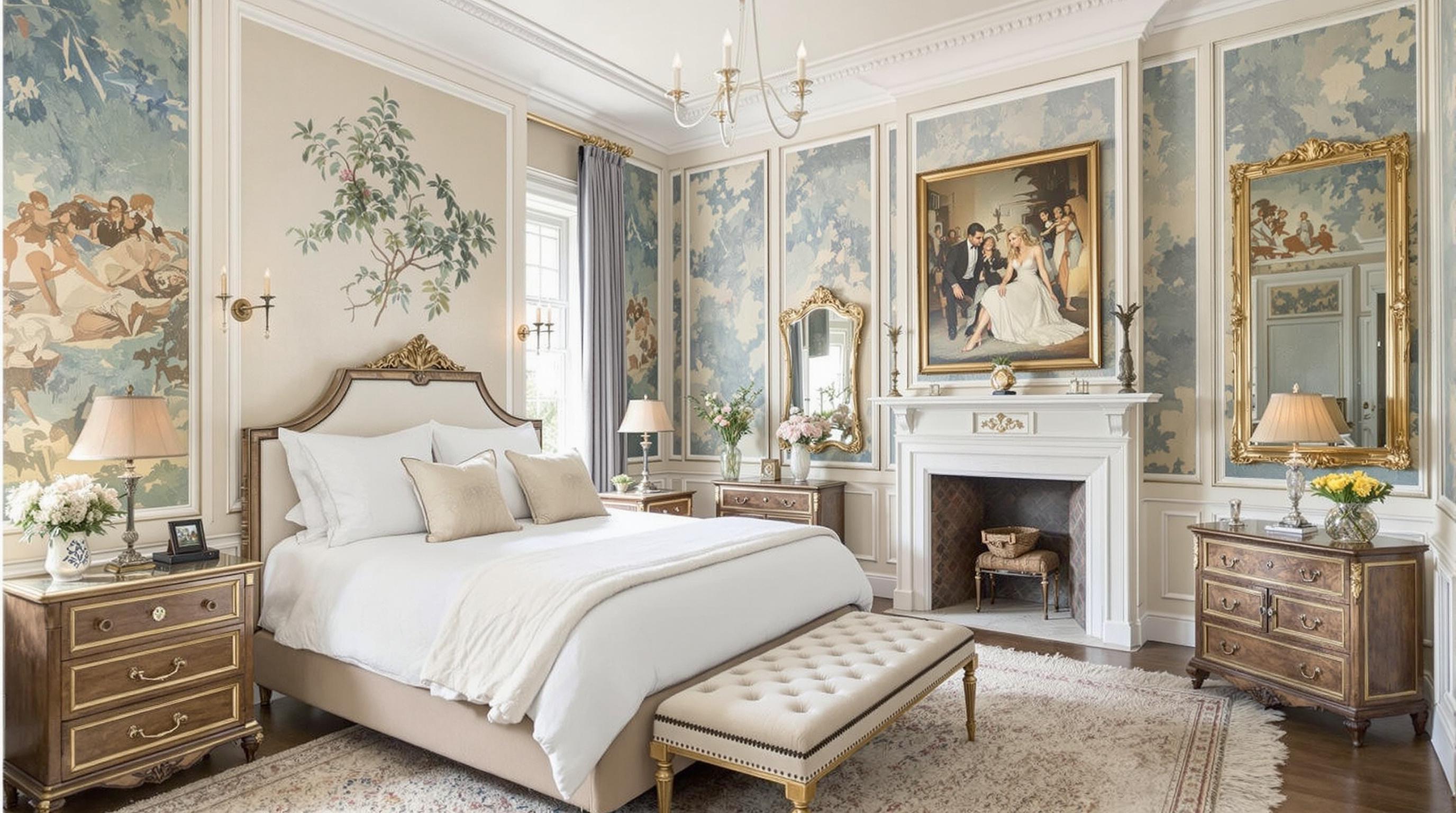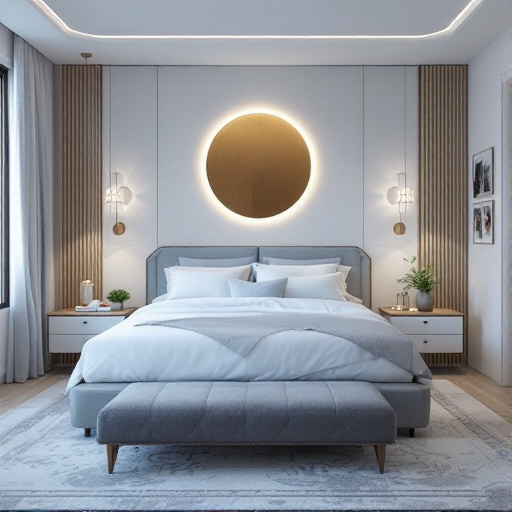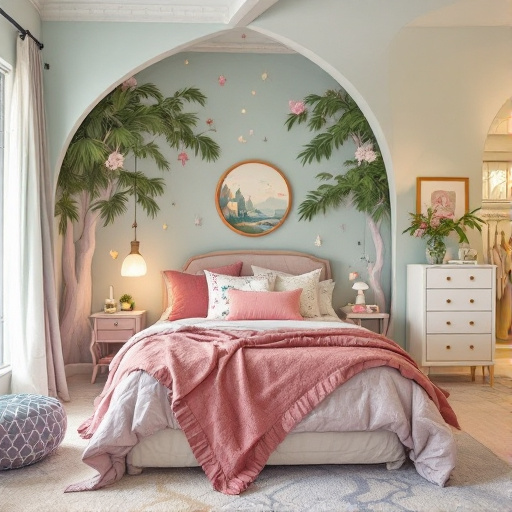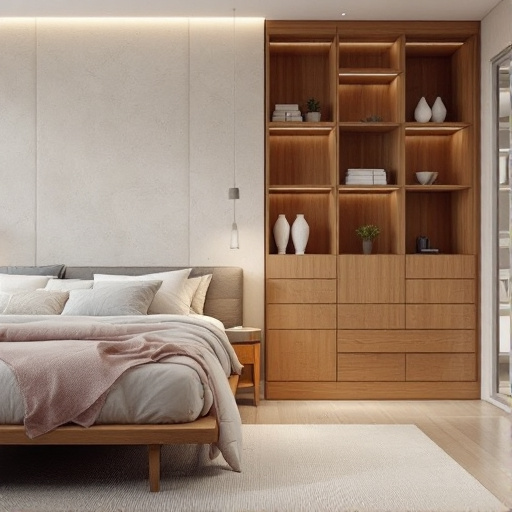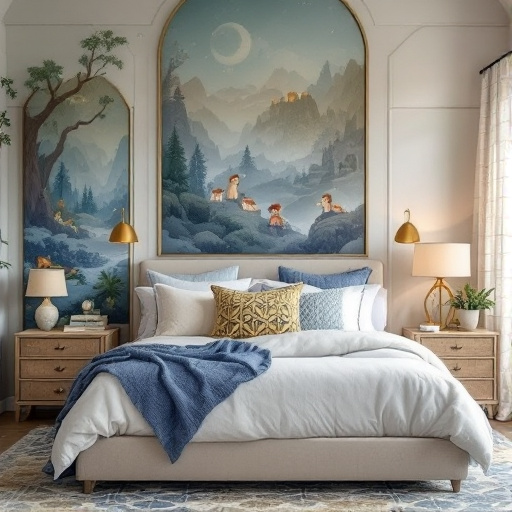Featured Articles
- 12 Luxurious Bedroom Layout Secrets Borrowed from Historical Palaces to Elevate Your Private Sanctuary
- Dreaming in Color: How Neuroscience Influences Your Bedroom Palette Choices
- "Unlocking Dreams: The Intriguing Link Between Bedroom Design and Sleep Science You Never Knew"
- "Unlocking Dreams: The Surprising Impact of Sleep-Saving Furniture in Modern Bedroom Design"
- Whimsical Bedrooms: Embracing Eccentric Themes for an Unforgettable Personal Oasis
12 Luxurious Bedroom Layout Secrets Borrowed from Historical Palaces to Elevate Your Private Sanctuary
12 Luxurious Bedroom Layout Secrets Borrowed from Historical Palaces to Elevate Your Private Sanctuary
12 Luxurious Bedroom Layout Secrets Borrowed from Historical Palaces to Elevate Your Private Sanctuary
1. Grand Canopy Beds for Majestic Presence
The canopy bed is a timeless symbol of royalty and grandeur, often seen in the private chambers of historical palaces like Versailles and the Taj Mahal. Incorporating a grand canopy bed in your bedroom instantly commands attention, creating a focal point that exudes luxury. Heavy drapes or embroidered fabrics around the frame not only add privacy but also bring a sense of opulence reminiscent of the Renaissance and Baroque periods.
Beyond aesthetics, canopy beds provide a cozy enclosure, enhancing comfort and intimacy. Using rich materials such as velvet or silk for the canopy elevates the tactile experience, inviting relaxation in a regal setting. This approach connects modern bedroom design with heritage, turning your personal space into a sanctuary fit for nobility.
Historical palaces often designed canopies with detailed woodwork or gilded accents, adding artistry to function. Even a simplified version can echo this splendor while adapting to contemporary tastes and spatial constraints. Thus, adopting a canopy bed styled after palace traditions adds both grandeur and a warm sense of retreat to your sanctuary.
2. Symmetry and Balance in Furniture Placement
Palaces from the classical era emphasize symmetry and balance, an architectural principle that carries into bedroom layouts as well. Aligning furniture pieces in pairs on either side of the bed creates harmony and a sense of order, reflecting the balanced aesthetics of historical royal chambers. Nightstands, lamps, and seating arranged symmetrically promote a relaxing environment through visual calm.
Symmetry extends beyond mere visuals; it enhances the functionality of the bedroom by providing equal access and convenience on both sides of the bed. This layout fosters a shared experience in master suites while maintaining elegance. Designers often drew upon these principles to showcase discipline and refinement in private quarters of nobility.
Incorporating symmetry requires mindful spacing and choosing furnishings of similar scale and style. Even minor elements like matching cushions or mirrored décor items contribute to a cohesive and luxurious atmosphere. Embracing this classical design wisdom will elevate your bedroom's aesthetics and operational flow.
3. Luxurious Layered Textiles for Warmth and Texture
Historical palaces often featured intricate layering of textiles to add warmth and tactile richness to bedrooms. By combining high-quality rugs, heavy curtains, plush upholstery, and multiple bedding layers, these rooms became both sumptuous and inviting. Recreating this layered effect enhances your bedroom's depth and comfort.
Mixing fabrics like silk, brocade, velvet, and cashmere adds visual intrigue and tactile variety, much like the sumptuous chambers of the Ottoman and Ming dynasties. Textiles with ornate patterns or embroidery can pay homage to traditional craftsmanship while heightening a sense of luxury. This tactile richness helps turn a bedroom into a cozy retreat despite its grandeur.
Moreover, layering textiles can aid in temperature regulation and sound dampening, beneficial in creating a restful environment. Choosing complementary colors and patterns unites the décor while reflecting a historic sense of indulgence. This design secret is both practical and aesthetically rewarding for anyone wanting to elevate their private sanctuary.
4. Statement Ceilings with Artistic Detailing
Palace bedrooms rarely overlooked ceilings, often adorned with frescoes, plasterwork, or intricate wood paneling. This elevated focus enhances the vertical dimension of a room, making it feel more expansive and luxurious. Incorporating painted ceilings or decorative moldings today can imbue your bedroom with regal character and visual interest.
Fresco-inspired murals or stenciled patterns evoke the grandiosity of Renaissance and Baroque spaces, transforming a mere architectural element into an artful centerpiece. Even subtle usage of gold leaf or ambient lighting integrated into ceiling designs can mimic the warmth and richness seen in historical structures.
Attention to the ceiling encourages the eye to explore beyond standard furnishings, creating a fully immersive environment. Whether through DIY stenciling or commissioning custom artwork, this secret adds an unexpected layer of sophistication that elevates your private sanctuary to palace-worthy grandeur.
5. Elegant Chandeliers as Centerpieces
Chandeliers are iconic fixtures in palace bedrooms, combining utility with breathtaking artistry. They serve as luminous focal points that fill a room with soft, ambient light while projecting refined taste and status. Adopting an elegant chandelier enhances the ambiance and instantly lifts the style quotient of any bedroom.
From crystal to wrought iron and gilded brass, chandeliers historically span diverse aesthetics, allowing versatility in modern design. Their presence recalls opulent periods such as the Louis XIV era, when lighting was a symbol of wealth and technological progress. Contemporary homeowners can choose fixtures that blend tradition with their personal style.
Strategic placement of a chandelier above the bed or central seating area ensures balanced illumination and emphasizes architectural features. Complementing wall sconces or candles can replicate the warm, inviting glow of candlelight favored in historical settings. This lighting secret is key to transforming your bedroom into a royal haven.
6. Incorporating Ornate Mirrors for Depth and Light
Mirrors with detailed frames were a staple in palace bedrooms, doubling light and enhancing spatial perception. Positioning an ornate mirror opposite a window or near a light source maximizes natural illumination, brightening and enlarging even modest bedrooms. This trick also adds an artistic dimension through carved or gilded mirror frames.
Historically, mirrors served both functional and decorative roles, reflecting the room’s lavishness and magnificence. A well-chosen vintage or vintage-inspired mirror can pay tribute to styles like Rococo or Victorian while integrating gracefully into modern décor. This blend respects tradition without sacrificing functionality.
The interplay of reflections creates visual interest, encouraging a feeling of openness and lightness. Incorporating multiple mirrored surfaces subtly echoes the grandeur of palace interiors, where light and intricate décor collaborate to elevate living spaces. This design secret is practical and visually compelling.
7. Using Rich Color Palettes for Dramatic Impact
Historical palaces favored rich, saturated colors like deep reds, royal blues, emerald greens, and gold accents to symbolize wealth and power. Integrating a bold but refined color palette in bedroom walls, textiles, and furnishings immediately creates an atmosphere of luxury. These color choices foster warmth and emotional richness aligned with royal taste.
Combining jewel tones with metallics and neutrals balances drama and serenity, keeping the space vibrant yet relaxing. This approach also connects with historical painting and textile traditions known for their vivid coloration. Such palettes elevate bedrooms from mere functional rooms to immersive experiences.
Working with these tones thoughtfully—using accent walls or carefully placed décor items—ensures sophistication rather than overwhelming intensity. Emulating palace color schemes invites a sense of history and luxury that personalizes and beautifies your private sanctuary.
8. Alcoves and Niches for Intimate Spaces
Many palace bedrooms incorporated alcoves and niches as cozy, private areas for reading, dressing, or quiet contemplation. Borrowing this idea introduces architectural depth and functional zoning within the room, enhancing comfort and privacy. Nooks adorned with plush seating or cabinetry increase usability and charm.
These recessed spaces also offer opportunities to display treasured items like antique books, sculptures, or family heirlooms, infusing the room with personality and history. Alcoves inspire a sense of seclusion and sanctuary ideal for bedrooms designed to be retreat-like.
Modern adaptations can include built-in bench seating with cushions, small bookshelves, or decorative niches with spotlighting. By creating defined but connected spaces, this palace-inspired feature elevates spatial complexity and intimacy in your bedroom.
9. Lavish Window Treatments to Frame the View
Heavy draperies and layers of curtains adorned palace windows to control light, privacy, and temperature. Luxurious window treatments framed views dramatically, acting as both décor and functional design. Applying this concept adds texture, softness, and visual framing to modern bedrooms.
Materials such as damask, velvet, or silk with tassels or ornamental tiebacks recall historical elegance while offering flexibility in light filtering. Layering sheer curtains beneath heavier drapes allows control over mood and atmosphere throughout the day and night.
Well-designed window treatments soften architectural lines and enhance a room’s rhythm and proportion, key to palace-level aesthetics. This layering not only improves comfort but helps replicate the stately charm and privacy enjoyed by historical royalty.
10. Incorporating Antique or Vintage Furniture Pieces
Integrating carefully selected antique or vintage furniture instantly imbues a bedroom with timeless luxury and authenticity. Historical pieces carry craftsmanship and character reflecting the era’s artistry, adding depth and narrative to contemporary spaces. Even a single statement piece such as a dresser or armchair recalls palace grandeur.
Blending antique furniture with modern accents creates a balanced and inviting environment, honoring tradition without feeling museum-like. Palatial bedrooms often mixed new and heirloom items for rich layers of style and function. This eclectic but thoughtful approach personalizes the space uniquely.
Acquiring antique pieces from reputable sources ensures quality and historical value, while refinishing or reupholstering adapts them to current comfort and taste. Incorporating these treasures fosters a connection to history and craftsmanship that elevates your private sanctuary to regal heights.
